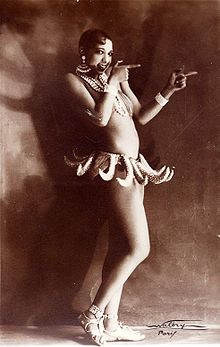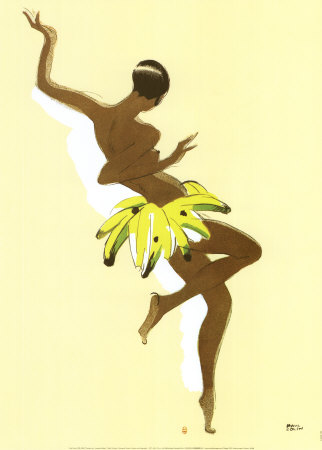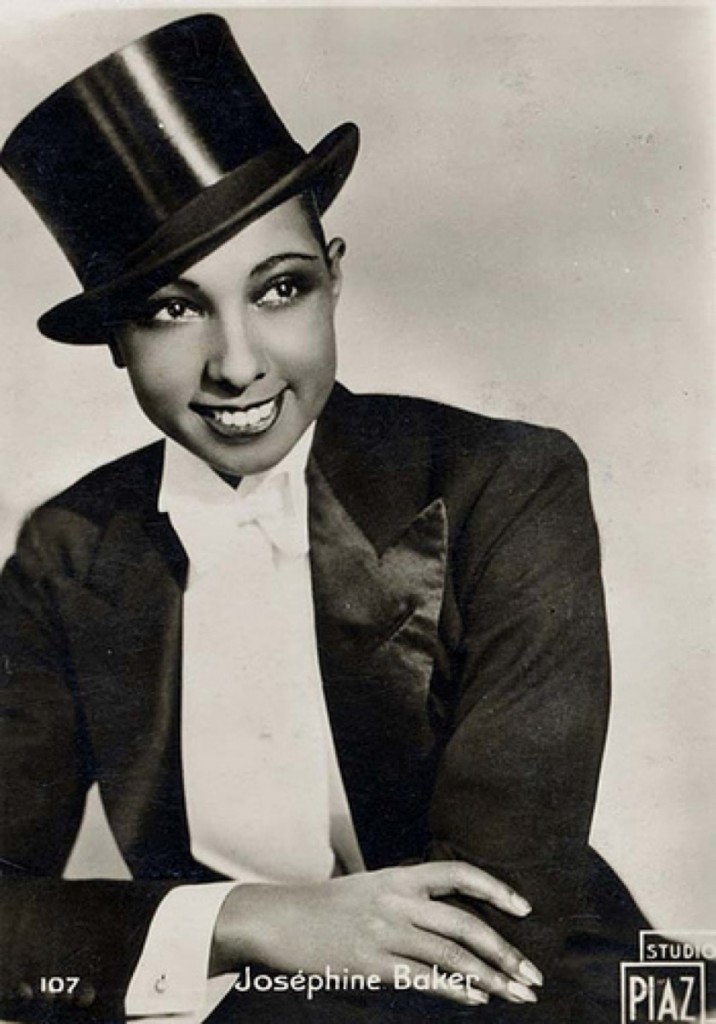About six months ago, I wrote about the racist moments that cropped up on the latest cycle of “America’s Next Top Model." (I realize in reality TV-land that this might has well have been the last century, and that about seven seasons have aired since then.) One of the moments that struck me as the most insanely questionable was when a designer dressed up black British model Analiese in a skirt of dangly plush bananas, while he dressed the other two models—both white—in more traditional, Marie Antoinette-style outfits.
It was pointed out to me that the tropical getup may have been purposely evocative of today’s Historical Woman, the amazing Josephine Baker: an American-born French singer, dancer, and all-around entertainer who fought Nazis and racists on the side. One of her most famous stage costumes was a skirt made of dangling bananas, usually accompanied by a complete lack of a top. This throws the whole ANTM affair into a much more complicated and ambiguous place—especially considering Ms. Baker’s agency in marketing her act and image in this way. How to feel about it now?
Let’s start with the banana skirt. The garment has been alternately described as problematic and empowering, as an accessory of European colonialist fantasy and as a tool that Baker knowingly used to subvert racial and gender categories. In this way, the skirt is really a microcosm for her entire career, at least in the early decades.
When Josephine Baker, born Freda McDonald in St. Louis, Missouri in 1906, arrived in Paris in 1925, France was obsessed with black culture. For them, Josephine—who appeared in a show called “La Revue Nègre”—was a safe venue for their fantasies about “the savage,” a figure often extolled as the antidote to a spiritually oppressive civilization. That Josephine was from Missouri and not deepest Africa seemed to mean little to her French fans and critics.
“The white imagination sure is something when it comes to blacks,” Josephine quipped. I like to think she meant: “White people sure can be racist!”
Baker appeared in a number of shows in which she was usually scantily clad, often portraying a “savage” who meets a French colonial explorer and dances to the accompaniment of African drums. See a video of one such dance here. Critics rhapsodized about her primal vitality and her exotic looks. Picasso extolled her “coffee skin, ebony eyes, and legs of paradise,” and she was admired by everyone from Ernest Hemingway to Jean Cocteau (oh, Paris in the 1920s!).
While the banana skirt and the “primitive” dances, as well as the audience reaction, may induce discomfort in a modern mind (like mine), it’s possible that in the context of her time Josephine was exercising an unprecedented kind of power, even as she reproduced the stereotypes that still popularly characterized her race. Her particular brand of entertainment was insanely marketable and earned her great success and admiration. She herself may have been the one who invented the banana skirt—thus it was not, as the liberal imagination (like mine) might like to infer, foisted upon her by a racist white stage manager. Either way, she certainly took advantage of its popularity, advocating for everything from banana moisturizers to pomades to custards that bore her name. (This last was actually created by Alice B. Toklas, Gertrude Stein’s GFF. Oh, Paris in the 1920s!)
Josephine Baker’s crazy whirlwind of a life was by no means limited to her stage career. During World War II, Josephine was a spy for the French Resistance movement. Thus, she joins Julia Child in the “unlikely spy” category. (Waiting for Josie & Josephine.) Her Europe-wide performing career was the perfect cover for her to casually participate in—and then remember-- all sorts of important conversations, and she passed the info on to the Allies, aiding Charles de Gaulle and his Free French buddies.
What motivated this singer/dancer to enter the world of political intrigue? It’s true that she was a devoted nouveau francaise and that she loved her adopted country—but even more, Josephine hated Nazis. “The Nazis were racist,” she told Ebony magazine in 1973. “They were bigots. I despised that sort of thing and was determined that they must be defeated.”
As a result of her service to France, Josephine became the first American woman to receive a full French military funeral upon her death in 1975, an event that shut down the streets of Paris. She even got a 21-gun salute, which, apparently, is more than just a Green Day song.
There’s really too much more to say about Josephine in this confined space. For example: She adopted twelve children from different countries and called them her “Rainbow Tribe” (way before Angelina Jolie). She lived in a fifteenth-century French castle. She had pet cheetahs. She participated in the Civil Rights Movement and was asked by Coretta Scott King to help lead it following the assassination of King’s husband. (Baker declined, probably for safety reasons.) She refused to play to segregated audiences on her U.S. tour and thus helped accelerate integration.
Josephine Baker’s legacy continues to inspire many women to this day, and her image—often, but not always, including that infamous banana skirt—pops up in the most unlikely of places. Look for her cameos in Midnight in Paris, The Triplets of Belleville, and the animated Anastasia. Even Beyoncé has paid tribute.
I wonder now what Josephine would think of where we are now, both in the U.S. and Europe. She was happy with the progress that had been made even in her own lifetime. But how far have we really come? To what extent do we still exoticize women of color? Even as overt, sickening racism becomes less frequent, what subtler forces are at play that continue to reveal and reinforce power imbalances between whites and minorities?
I’m optimistic that, at the very least, the visceral discomfort induced in liberal-minded minds (like mine) by seeing a black woman dressed in a banana skirt by a white man on TV means we’ve at least made some progress.






